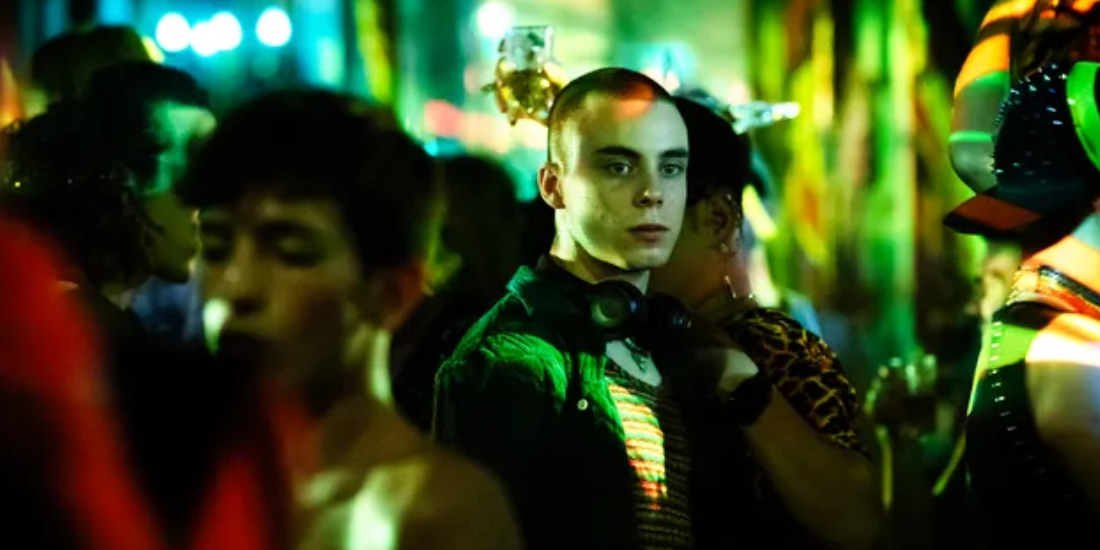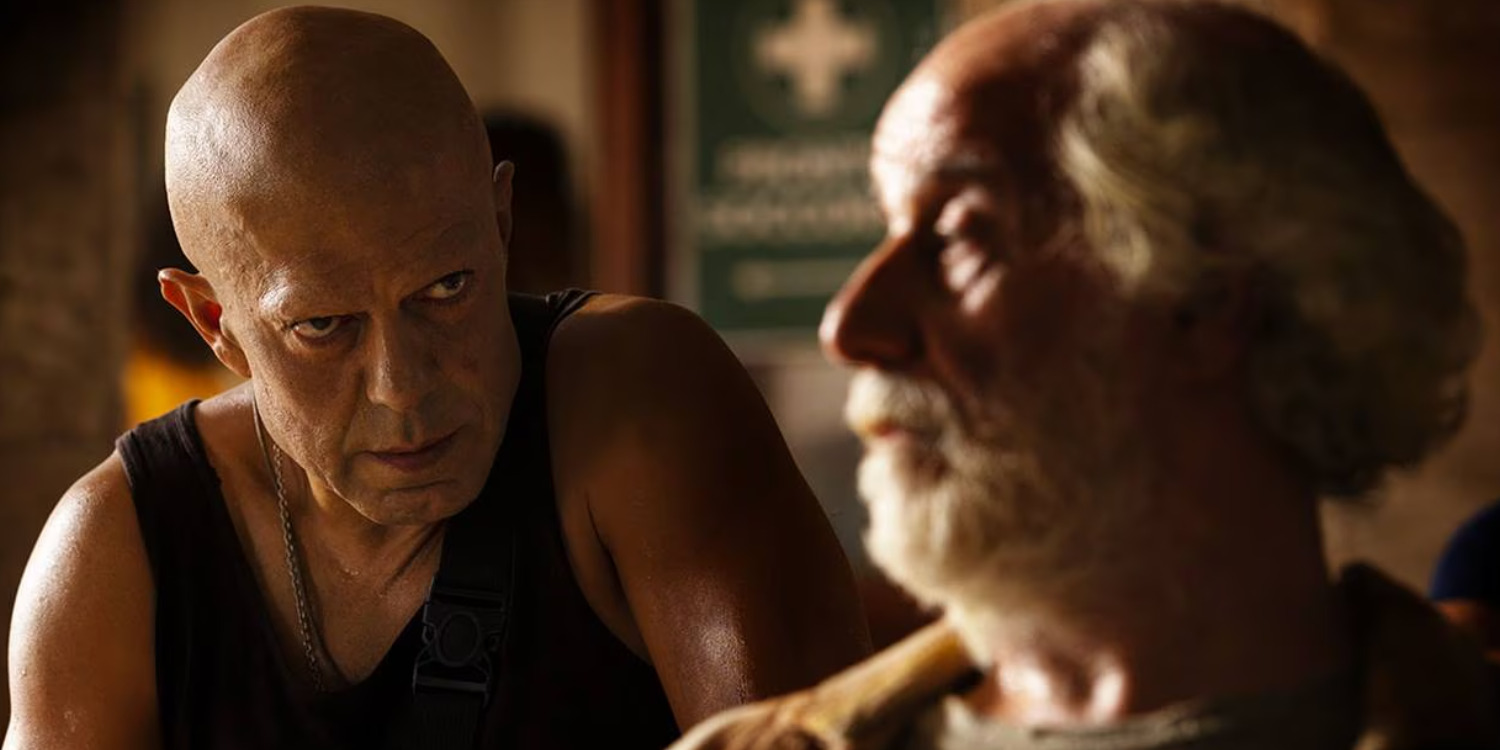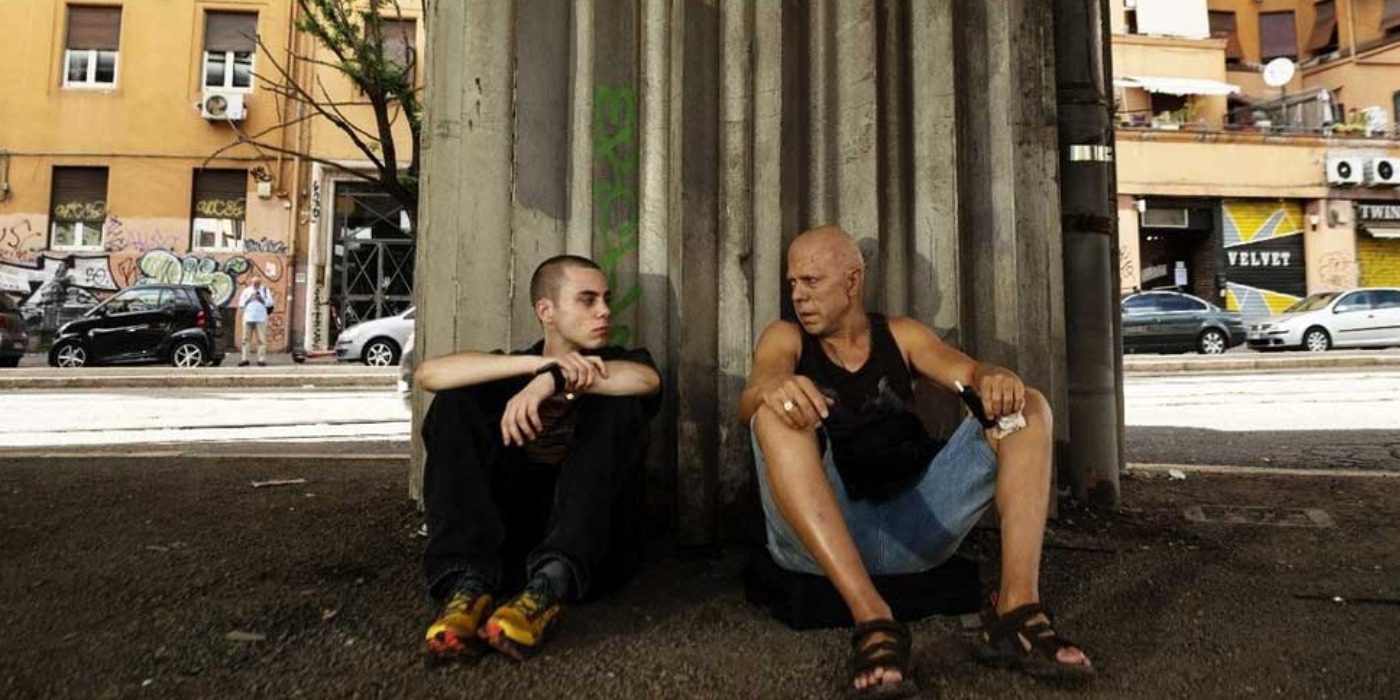Stefano Sollima’s Italian crime noir film ‘Adagio’ presents a story about Rome’s underworld through a thrilling tale about generational inheritance and revenge. The narrative follows Manuel Coretti, former gangster Daytona’s young son, who runs into some trouble after finding himself entangled with Officer Vassco and his fellow corrupt cops. As a result, the boy seeks out help from Cammello, who shares a complicated past with his father. As these men navigate the unforgiving stress of Rome and attempt to resolve their issues, the past continues to haunt them alongside the smelting heat of a nearby fire.
The film’s concentrated focus on Manuel and his run-in with Vasco allows the narrative to remain grounded within its gangster-infused, crime-drive setting. However, for the same reason, the addition of Daytona and Cammello’s past as former gangsters elicits natural intrigue, compelling viewers to wonder about the characters and their storylines’ relation to reality.
Adagio: Stefano Sollima’s Tale About Rome and Redemption
‘Adagio’ found its origins in filmmaker Stefano Sollima’s desire to create a story centered around Rome after his past few projects, like ‘Without Remorse’ and ‘ZeroZeroZero,’ departed him from the city in his creative endeavors. Therefore, with ‘Adagio,’ the director sought to return to his roots, rounding off a thematic trilogy he began that revolves around stories of Roman criminality. The other two installations on the list remain the 2012 film, ‘A.C.A.B. – All Cops Are Bastards,’ and the 2015 film, ‘Suburra.’ Thus, ‘Adagio’ emerged as a personal project rather than a cinematic biographical retelling of a true crime story.

With the film, Sollima wanted to portray three legendary gangsters in Rome with a redemptive element added to their narrative. Consequently, he came up with the idea of Manuel and his troublesome misadventures on Daytona, Polniuman, and Cammello’s sides. However, as the story started to take place from there, the narrative’s criminality became surface-level, giving way to these characters to chisel out a universally relatable and resonant story.
Sollima discussed the same in an interview with Variety and said, “This [‘Adagio’] is actually a film on human relations specifically— it’s about father-and-son rapports. The use of genre is just a ploy to talk about human beings and society. The father-son relationship is the heart of the narrative. The film’s crime genre is an excuse to talk about something else.” Thus, the film expertly utilizes its criminal genre to depict a story ripe with a sentimentally resonant story about the interconnection of generations.
Nevertheless, as a result of its genre, the film holds onto several elements of a classic Italian crime story, harking back to different crime films of the past. Through corruption within the police department, conspirator political ploys, and old betrayals, Manuel’s unconventional narrative sports several building blocks of the genre. Yet, to distinguish itself from similarly crafted stories about Rome’s underworld, Sollima decided to equip a unique perspective while depicting the central city.
“Rome is often represented in cinema either by its great historical monuments and piazzas or by its quasi-Pasolini-like periphery,” said the director. “We [Sollima and set designer Paki Meduri] decide this movie should be set in everyday Rome where people move around a lot. So I thought, let’s depict Rome, but as though it was L.A.”
Thus, the film’s defining aesthetic and thematic depiction of Rome presents an influential addition to the worldbuilding within the film’s secluded storyline. Nevertheless, neither Manuel’s particular story nor the backstories of his father’s time hold a firm relevance to real-life crimes. For the same reason, the events explored within the film remain a work of fiction penned by director Sollima and his co-writer, Stefano Bises.
Daytona and Cammello: Rome-Based Gangsters
As a result of the film’s overall fictionality, most characters, including the central ex-gangsters, Daytona and Cammello, also remain fictitious additions to the tale. Nevertheless, despite their fictional origins, the film infuses several realistic elements within their character to maintain a sense of realism. For instance, their unseen backstories as former members of the Magliana gang bring a notable reference to reality to both characters.

The Magliana gang, better known as Banda della Magliana, was the most powerful criminal organization to rule over the politically tumultuous landscape of Rome during the mid-1970s. Under Franco Giuseppucci’s leadership, the gang made a name for itself and left a tangible mark on the city’s criminal history. While Daytona and Cammello’s stories barely touch upon this realistic element of their narratives, their association with the same allows the story to establish their fraught pasts and tie them to reality in the same stroke.
Consequently, even past their primes, Daytona and Cammello retain the skill, experience, and reputation required to help Manuel get out of his drastic situation. Furthermore, it paves the way for a unique study into the lives of prominent gangsters once their days of wild have come to an end. Therefore, through both characters’ separate— yet intrinsically connected storylines— the film establishes an authentic and entertaining connection to the world of organized criminality.
Nonetheless, since neither Daytona nor Cammello can be traced back to any significantly recognized former members of the Magliana gang, their relation to the same remains fictionalized. Therefore, although the characters retain a sense of realism and infuse their respective storylines with the same, they are confined to the story’s fictionality, sporting a lack of basis in real-life individuals.
Read More: Best Crime Movies on HBO Max


You must be logged in to post a comment.